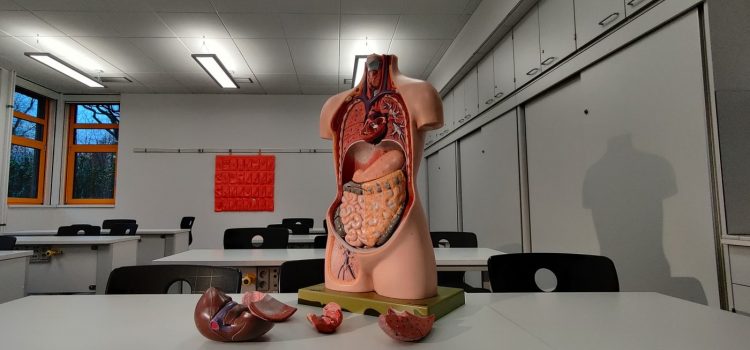

This article is an excerpt from the Shortform book guide to "Gut" by Giulia Enders. Shortform has the world's best summaries and analyses of books you should be reading.
Like this article? Sign up for a free trial here .
What is Gut by Giulia Enders about? How does Enders detail the science behind our digestive system?
In her book Gut, Giulia Enders aims to overthrow the idea that the gut is a gross and useless part of the body. She explains the role the gut plays in digestion, how it affects physical and mental health, and how to keep it healthy.
Here’s a brief overview of Gut by Giulia Enders.
Gut: The Inside Story of Our Body’s Most Underrated Organ
In her Gut, Giulia Enders explains how the digestive system works and how it impacts our health. She maintains that the gut is a system of organs as complex and intricate as the brain. By understanding how our guts work, she believes that we can live healthier, happier lives.
Enders published the book in 2014 (with an updated edition in 2018), in response to what she saw as a lack of publicly-available information on the gut. As a doctoral student studying gastroenterology, she noticed that people often think of the gut as “gross” or taboo, and she wanted to challenge this view. She also wanted to share useful scientific discoveries about the digestive system with the general public. (Shortform note: This guide refers to the 2018 edition of the book.)
| Public Discourse on the Gut Even before Enders published Gut, public interest in the digestive system was on the rise. In the early 2000s, major news outlets such as The New York Times began to publish articles on the newfound connection between the gut and the brain. This coverage helped bring new scientific discoveries about the gut into the mainstream. As people learned more about the digestive system, health and nutrition trends began to shift. According to one study, the number of adults taking probiotics—foods or supplements that contain helpful bacteria and support gut health—quadrupled between 2007 and 2012. Even though she did not start these trends, Enders’s work has undoubtedly contributed to them. First published in Germany, Gut sold more than 1.5 million copies and was soon translated into English, French, Spanish, Italian, and Arabic. Enders also gave a TED Talk about the gut which has nearly one million views on YouTube. |
The 2 Nutritional Building Blocks
Before exploring how the gut breaks down food, Giulia Enders in Gut first introduces the three nutritional building blocks: carbohydrates, fat, and amino acids (proteins). These building blocks are also known as macronutrients (macro- meaning “large”) because our bodies need large amounts of them to survive.
On a molecular level, Enders explains, different combinations of the three macronutrients make up all of the food that we eat. Your gut’s job is to break your food down into those tiny molecular components. Then it absorbs those molecules into the bloodstream and uses them to fuel your cells, store energy, and build important structures such as hormones, muscles, and DNA.
The Digestive System
The three nutritional building blocks we’ve just described play crucial roles in storing energy, powering cells, and building bodily structures. However, to receive these benefits, your digestive system must first break down food into molecules that you can absorb.
In Gut, Enders explains that digesting food is a complex process that requires all of the organs in the gut to work together and perform their precise functions. She describes this process from start to finish, detailing the role of each organ: the mouth, esophagus, stomach, small intestine, large intestine and appendix, and the final stage of pooping.
Microbiomes and Bacteria
Enders previously promoted how the gut’s organs work together to digest food and keep us healthy—but our organs are only one part of the picture. We have huge populations of bacteria in our guts. These bacteria play a vital role in digestion, and emerging science suggests that they also have other important effects. These include strengthening our immune system and possibly impacting our mental health.
The Role of Bacteria in the Gut
Our bodies are filled with and covered in microbes—tiny organisms that can only be seen through a microscope. Enders claims that 90% of the cells in our bodies are microbes. Taken together, these microscopic organisms form what scientists call your microbiome, an ecosystem of particles operating inside your body.
Almost all of the bacteria in your microbiome live in your gut. Enders puts the number at 99%, with more than 1,000 different species present. While scientists are still discovering everything they do, it’s clear that these bacteria serve several important functions, including keeping us healthy and providing us with nutrients.
Can Bacteria Influence Mental Health?
While your gut bacteria help you stay healthy and get the nutrients you need, recent evidence suggests that they can have negative effects as well. Enders explains that one of the emerging fields of research in gastroenterology (the study of the gut) is the connection between the gut and the brain. Some scientists believe that the composition of our gut bacteria can impact our susceptibility to stress, anxiety, and even depression.
Developing and Maintaining Your Microbiome
Our microbiomes are crucial to our health in multiple ways. But how do we get these helpful bacteria in our gut? In Gut, Giulia Enders explains how we develop our microbiome and advises on how to maintain a healthy gut.
Microbiome Development
According to Enders, we begin to develop our microbiomes within seconds of being born. Enders claims that under normal circumstances, the womb is germ-free. This means that we first come into contact with bacteria when we enter the birth canal. These bacteria begin to train our immune system and help us digest food.
As we continue to grow, our microbiomes change based on our surroundings. Enders notes that babies put many items that they find in their environments in their mouths, which exposes them to all sorts of new bacteria. While this increases the risk of illness, it also helps develop immunity and create a healthy microbiome.
How to Maintain a Healthy Microbiome
By the time you’re three years old, you have a basic composition of gut bacteria that will remain consistent throughout the rest of your life. Although this basic composition doesn’t change, you can still influence the health of your microbiome as you get older. Finally, Gut by Giulia Enders provides three tips on how to do this: take prebiotics and probiotics, avoid bad bacteria, and only take antibiotics when necessary.

———End of Preview———
Like what you just read? Read the rest of the world's best book summary and analysis of Giulia Enders's "Gut" at Shortform .
Here's what you'll find in our full Gut summary :
- How your digestive system works and why it’s important to keep it healthy
- How tiny organisms in your intestines influence your immune system (and possibly your mood)
- What your appendix actually does






